

Volume II.
By Ian Walker. UK.
Introduction.
I return this month to one of my favourite topics, photomicrography including searching for debris and mountant anomalies trapped in slide preparations which can take on strange forms when combinations of contrast enhancing techniques are used. Rather than go into detail of the methods of achieving each image I have selected some names which I think contribute to the mystery of these 'landscapes' in miniature. It is beneficial to stand back a bit a little from your laptop or computer screen when viewing the images, especially if you are using 1024x768 resolution due to the images which are more impressionistic rather than highly detailed.
All photography was taken with the Zeiss Axiostar, A-Plan and CP-Achromat objectives, Zeiss phototube and the Canon G6 digital camera. Contrast techniques include some complex combinations of oblique illumination, Rheinberg filters, coloured acetates, [also acting as variable retardation plates], dark-field and polarizing techniques. See if you can tell which image matches the slide preparation. I have used a plant section, paper, aspartic crystals [C. M. Topping], cuticle of a cat [Richard Suter], glycine with dextrin [the slide has been initialed only] and a slide of Vitamin C kindly donated by Mike Samworth, this looks like Mike used a 'wide comb' technique when it was prepared to create pits and valleys across the sample.
Small changes in the angle of polarizing elements, oblique illumination or coloured acetates can have a dramatic effect, also there may be a tendency to use just low power objectives for this type of work but the use of a 20x objective to single out tiny imperfections that would be missed with say a scanning objective like a 2.5x is beneficial and was used in some of the latter images in the article, however this requires some patience when a large preparation is being searched for interesting artifacts. Without changing any contrast setup the effect can change quite considerably as different objectives are swung into position due to the field of view and the way the oblique lighting interacts with each objective. No image manipulation was carried out in Photoshop other than for resizing/sharpening and removing the colour information to make the three B&W images. Several of the images below are from the same point on the slide to show how the effect can change with small manipulations of the multiple contrast techniques together with a different objective.

American dream I.

Parallel worlds.
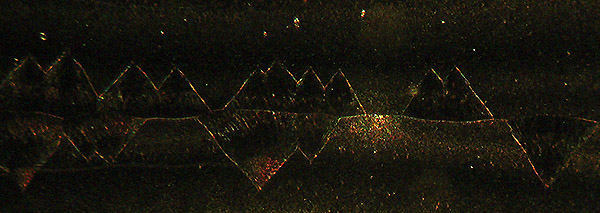
Cosmos.
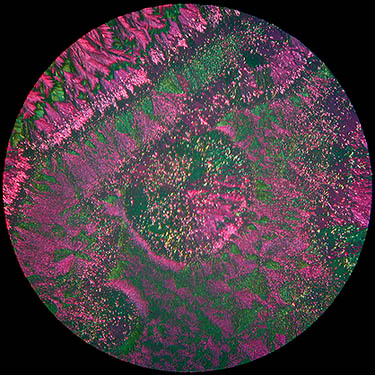
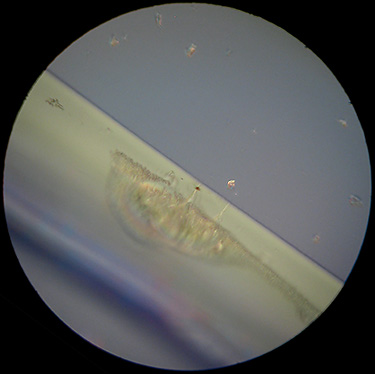
Planetary moons.
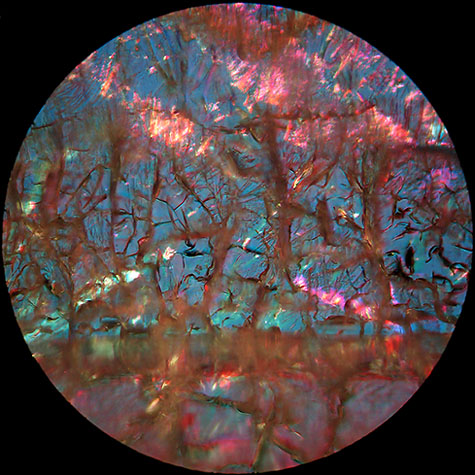
The matrix.
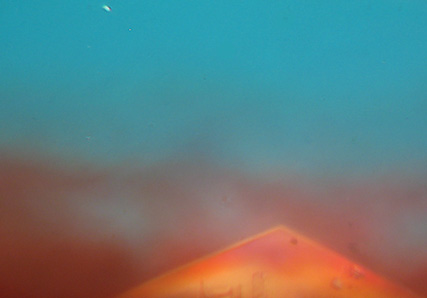
Pyramid and the comet.
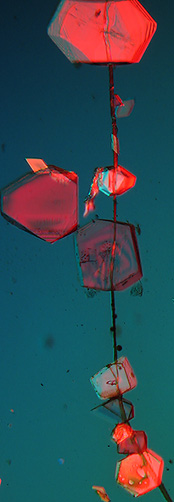
Jewels on a string.
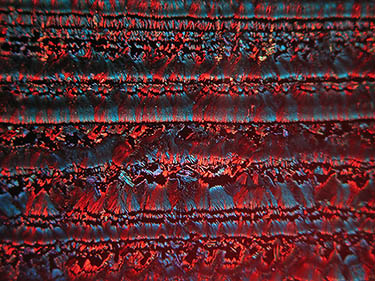
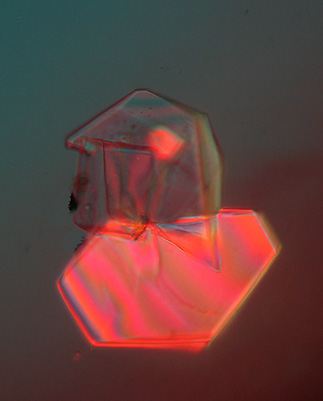
Turkish rug and intergalactic duck.

Spots!
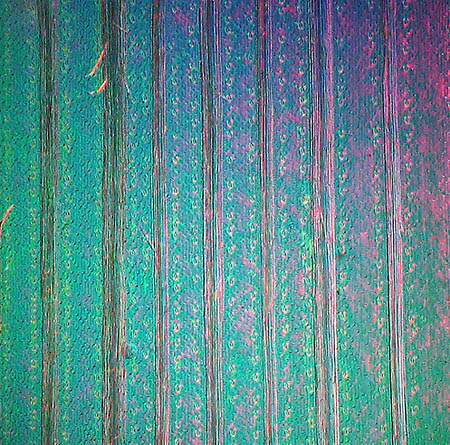
The 1960's.
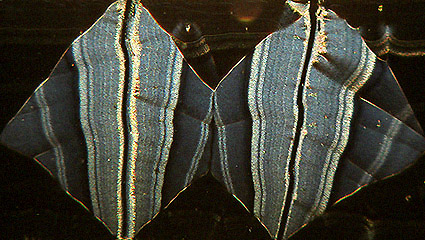
Flat fish.

Earth from space.
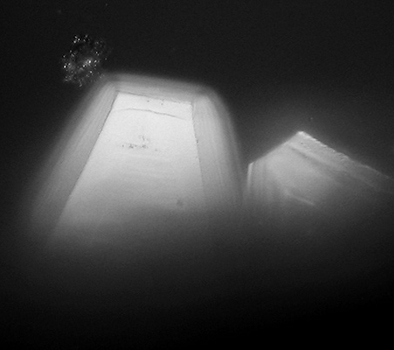
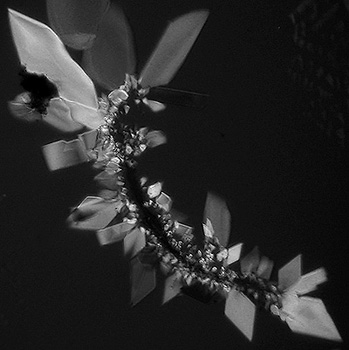
Mystics.
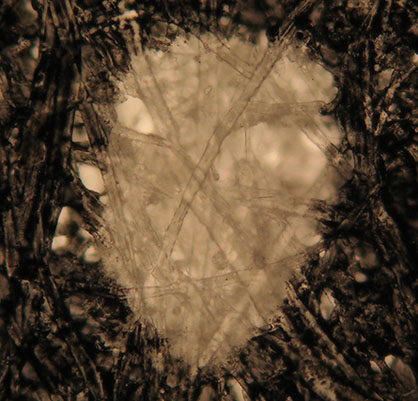
All tangled up.
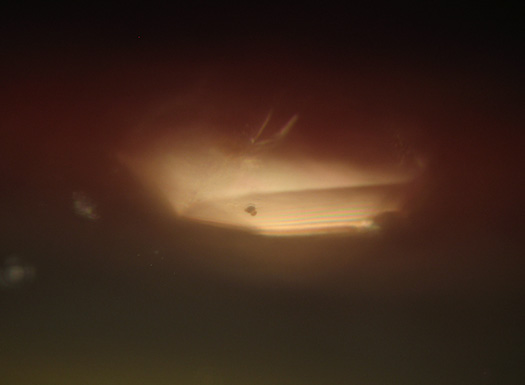
Spooky spaceship.
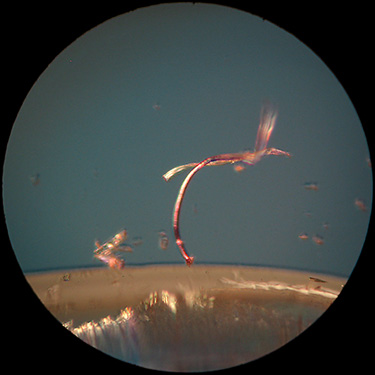
10, 9, 8, 7, 6, 5, 4, 3, 2, 1...we have lift off.
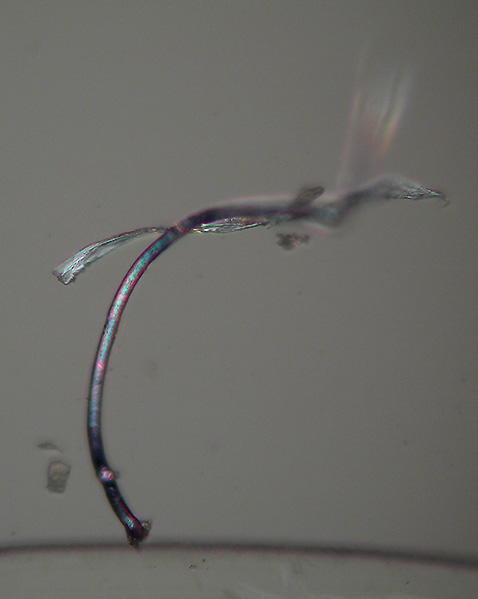
Flight of the Phoenix.
Reminds me of the head of an eagle and the body of a damsel fly!
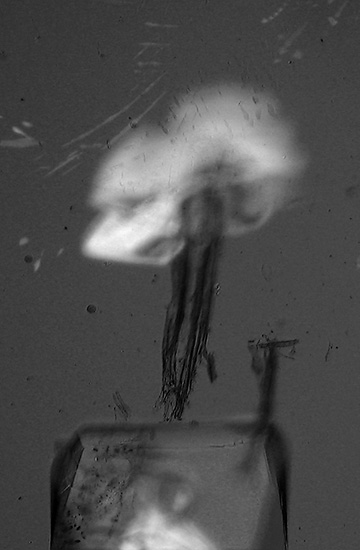
Flowers anyone?
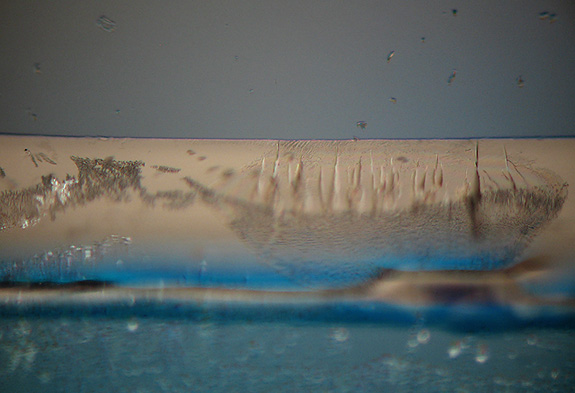
The lake of no return.

American dream II.
And finally.
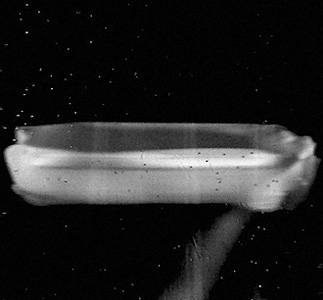
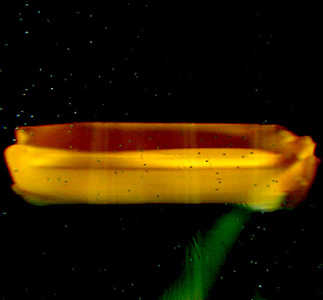
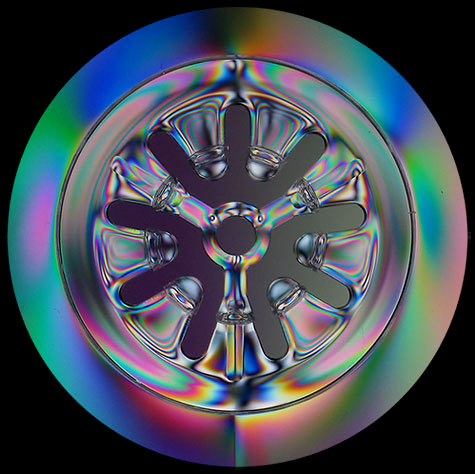
We can also have strange macrophotography what do you think these are and how did I take them?
If
you have
enjoyed these images you may like to visit my previous article Strange
New Worlds
where some
of the techniques used in this gallery can be seen.
the end.
Comments to the author, Ian Walker, are welcomed.
Please report any Web problems or offer general comments to the Micscape Editor.
Micscape is the on-line
monthly magazine of the Microscopy UK web
site at
Microscopy-UK